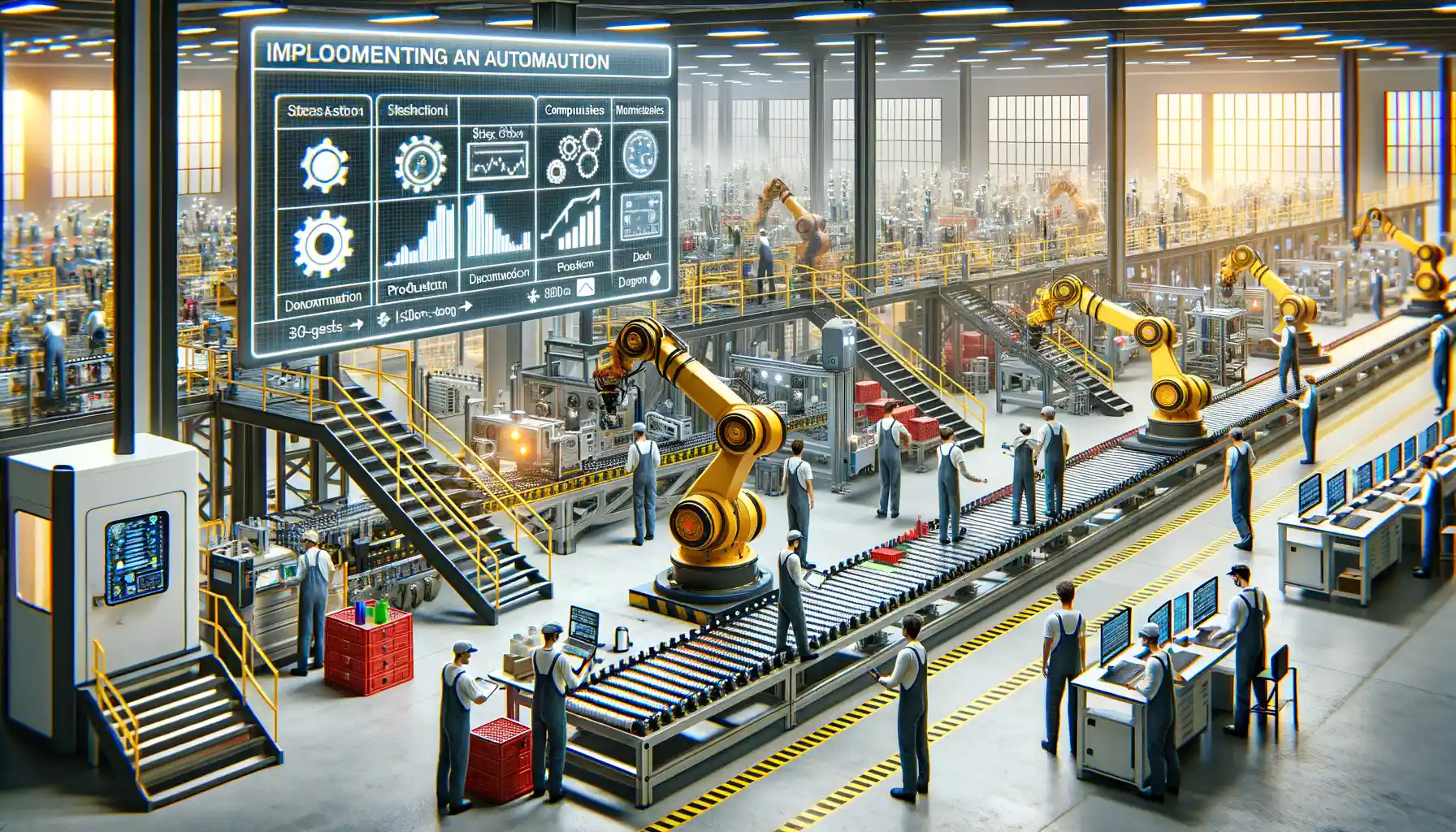Understanding the Basics of Automation in Small-Scale Manufacturing
The Magic Behind Manufacturing Transformation
Automation in small-scale manufacturing might sound like a big, intimidating leap, but it’s much simpler than you think. Imagine replacing tedious, repetitive tasks with tools and systems that work like your most reliable team members—never tired, always precise. That’s the heart of automation: giving machines the mundane while you focus on creativity and growth.
Here’s the kicker—it doesn’t have to be complex or expensive. For example, think of a bakery automating dough kneading with a compact mixer. The baker still decides the recipe and adds the flair, but the heavy lifting? That’s handled by the machine. This kind of tech isn’t reserved only for giant factories; as a small manufacturer, you can adopt it in bite-sized portions tailored to your needs.
Key Questions Before You Dive In
To kick things off, ask yourself:
- Which tasks eat up time but add no creative value?
- Where are errors most likely to pop up in your process?
- Are there tools or software others in your industry swear by?
By starting with these questions, you won’t just automate—you’ll make automation genuinely work *for you*.
Key Benefits of Automation for Small Manufacturers

The Productivity Power Boost
Imagine this: a small manufacturing shop that hums like a well-tuned orchestra, with every player working in perfect harmony. That’s the magic of automation. By introducing even a few automated processes, you can supercharge your productivity. No more bottlenecks or endless hours spent on repetitive tasks. Instead, machines take on the grind while your team focuses on what truly matters—creativity, craftsmanship, and growth.
Here’s what happens when automation steps in:
- Faster production cycles: Say goodbye to delays. Automation ensures consistent output with no need for breaks or overtime.
- Precision and quality: Human error? Not in this house. Robots and smart software excel at delivering consistent, flawless results.
- Cost efficiency: Expensive mistakes or wasteful processes become a thing of the past, saving you money in ways you didn’t think possible.
The Freedom to Innovate
With mundane tasks off your plate, automation gifts you something priceless: time. For a small manufacturer, time is the currency of innovation. Imagine brainstorming new product designs or experimenting with materials while a robotic arm takes care of assembly. Suddenly, those “someday” ideas are within reach.
And here’s another gem—automation doesn’t mean replacing people; it means empowering them. Your skilled workers become supervisors and visionaries, using their expertise to guide advanced tech. It’s like upgrading your team with superpowers, blending human ingenuity with machine precision.
Types of Automation Technology for Small-Scale Businesses

Game-Changing Tools for Streamlining Your Operations
Automation technology isn’t just for giant corporations or futuristic labs filled with robots. It’s accessible, practical, and downright exciting for small-scale businesses ready to say goodbye to repetitive tasks and hello to efficiency. But where do you begin? Let’s dive into the world of automation tools tailored for your business needs.
Consider starting with programmable logic controllers (PLCs). These are like your business’s tiny masterminds—mini-computers designed to control automated processes with speed and precision. Think of them as the conductor of your manufacturing symphony, keeping every machine in tune and on tempo.
For those looking to ramp up efficiency without breaking the bank, explore collaborative robots, aka “cobots.” These handy helpers are smaller, safer, and work alongside your employees rather than replacing them. Whether it’s assembling small parts or packing boxes, cobots excel in tasks that need consistency but not full-time human focus.
- Automatic material handling systems: Conveyor belts or robotic arms can take the grunt work off your team’s shoulders.
- Inventory management software: Keep tabs on stock levels, orders, and supplies without lifting a finger—perfect for reducing costly errors.
Whatever you choose, remember: automation isn’t about replacing people; it’s about empowering them to focus on what humans do best—problem-solving, innovation, and creativity!
Steps to Implementing Automation in Small Manufacturing Units

Start Small, Dream Big
Embarking on the automation journey can feel a little like standing at the edge of a diving board—exciting and nerve-wracking all at once. But here’s the secret: you don’t have to leap headfirst into full-scale automation. Begin with baby steps that fit your business like a well-worn glove.
First, take a hard look at your current processes. Are there repetitive tasks eating up your team’s time? Maybe it’s packaging, labeling, or assembling parts. Start by identifying these bottlenecks. Once pinpointed, ask yourself this: “How could we make this task easier, faster, or less error-prone?” The answer often lies in simple automation tools—a conveyor belt here, a robotic arm there.
Then, test the waters with a pilot project. Choose one task to automate and experiment. Here’s your chance to observe how automation transforms that single process before scaling things up.
- Pick a process ripe for improvement—something tedious but critical.
- Research affordable solutions; many tools are tailored for small manufacturers.
- Involve your team in testing and training because humans and machines work best together.
Measure, Adjust, Repeat
Automation isn’t a “set it and forget it” deal. Treat it like nurturing a plant. After implementation, track key metrics like output efficiency, cost savings, and error reduction. If something’s not blooming as expected, tweak the system till it does.
Remember, every small manufacturing unit is as unique as its owner. Use automation to reflect your work culture and goals—not just to save time, but to unleash your team’s creativity and potential.
Overcoming Challenges and Best Practices for Success

Making Automation Work for Your Reality
Transitioning to automation in small-scale manufacturing can feel like stepping into uncharted territory. You may worry about costs, technical know-how, or even disrupting your current workflow. But here’s the thing: challenges don’t define us—our approach does.
One common hurdle? The notorious learning curve. Yes, adapting to new systems takes effort, but think of it like learning to ride a bike. At first, it’s wobbly and intimidating. But with consistent, practical steps, you’ll soon find momentum. Start simple: focus on automating one repetitive task instead of overhauling everything at once.
Another obstacle: fear of upfront investment. True, automation isn’t free, but it doesn’t have to be extravagant either. Tools like entry-level robotics or software for managing inventory are budget-friendly and high-impact. Consider leasing equipment, buying refurbished machinery, or using government grants that support small-scale innovation.
And here’s a tip from the trenches: involve your team early. When employees feel included in choosing tools or brainstorming solutions, they’re far more likely to embrace change.
- Hold workshops with your staff to familiarize them with tools.
- Celebrate every milestone, no matter how small—it keeps morale up!
The Power of Reliable Support Systems
Now let’s talk about isolation, which can feel like the unspoken challenge of small businesses. You don’t need to figure this out solo. Reach out to local manufacturers’ groups, join forums, or even slide into an expert’s inbox. Surrounding yourself with a network of experienced voices transforms problems into stepping stones.
Look for vendors who provide ongoing support. A responsive supplier is worth their weight in gold—they’ll troubleshoot glitches, offer training, and even guide your scaling plans.
At the end of the day, automation isn’t a cold, mechanical process; it’s a tool to amplify your mission. So embrace the bumps in the road—they just mean you’re moving forward.












